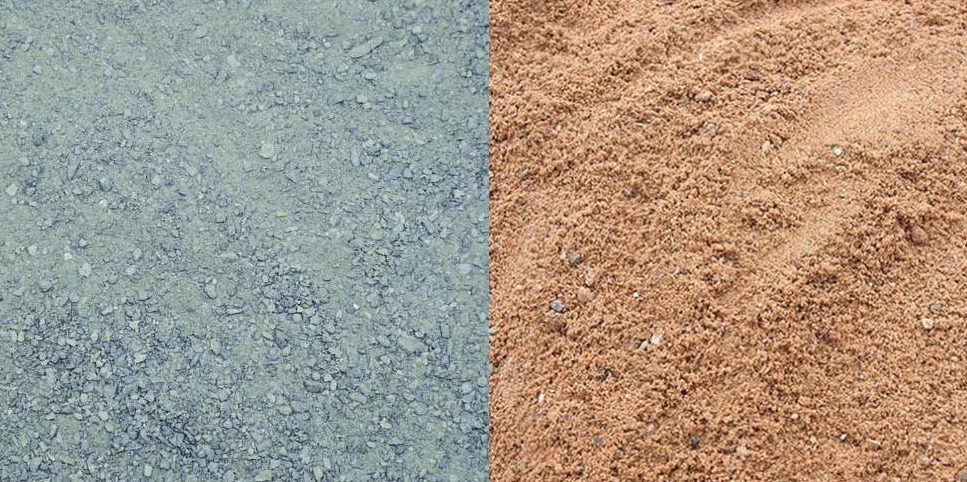
The best sub-base for artificial grass is a subject for debate among artificial grass installers. Whilst it is possible to use granite or sand, environmental conditions have to be accounted for.
Sometimes, granite will be the best option, other times it will be better to use sand. For residents in the UK, granite is generally preferred because it doesn’t retain as much moisture as sand.
The importance of a strong sub-based cannot be understated. It is not a step you want to wrong. If the foundations are not laid correctly, your artificial lawn will generate lumps and create puddles of water.
A sub-base must be laid with irrigation in mind. It must allow water to drain away efficiently and prevent seeds from sprouting beneath the fake grass installation. Weeds and plant bulbs create lumps on your lawn.
Getting the right aggregate makes all the difference. In this article, we look at the pros and cons of using granite dust and sharp sand.
Pros and Cons of Using Granite As An Artificial Grass Sub Base
The purpose of a sub-base is to retain density, allow permeability and allow excessive amounts of water to drain through without compromising the foundational structure.
In most cases, a combination of MOT Type 1 granite and granite or limestone dust ticks all the boxes. Stone dust compacts better which avoids your artificial lawn from acquiring ridges and lumps, and also allows water to drain through.
MOT Type 1 is the best sub-base material for strength and compaction. Although it helps with drainage, MOT Type 1 is not a permeable material. This means that water drains at a very slow rate. Rainy days can cause your fake grass to collect water.
The solution to avoid water pools is to combine MOT Type 1 granite with granite chippings. 2mm stones work well. The level of compaction of using granite clippings alone will not offer substantial support for artificial lawns that receive heavy or frequent traffic, but it does enhance drainage.
For commercial properties and home installations used for playing football, we recommend using 75mm of MOT Type 1 and 25mm of Granite dust. Increase the overall depth to around 75mm-100mm rather than the standard 50mm typically used for artificial lawns that receive light to moderate footfall.
For pet-friendly artificial grass installations, use a higher compound of granite but. Due to its drainage capabilities, dog urine will drain through to the subsoil quicker and help to avoid lingering odours.
Pros and Cons of Using Sand As An Artificial Grass Sub Base
Sharp sand has been used to lay artificial grass for decades. Some artificial grass installers still recommend it today because it is more cost-effective than granite.
It should be noted that sharp sand should be used when laying an artificial lawn. You can’t use standard ‘soft’ sand because it doesn’t have the solidity you need to maintain an even surface.
Sharp sand has larger grains so it’s coarser and stronger. It’s also highly permeable and excellent for enhancing the irrigation system of your fake lawn.
The major downside to sand, however, is that it retains moisture and subsequently breeds bacteria. Over time, the sand becomes less stable and starts breaking up which causes the surface to become uneven.
If you have pets or expect the area to be used frequently, using sand as your sub-base will cause your fake lawn to deteriorate and fall out of shape sooner.
On average, artificial grass installations are expected to last between 10 and 20 years. You can’t guarantee this will be the case if you use sand on fake grass installations used to play football.
Sand also provides a favourable environment for plant bulbs to grow. Seeds are stores of energy. To flourish all they need are the right conditions, namely, heat and moisture.
When seeds sprout, they can penetrate sand and will push against the underside of your artificial grass. When this happens, bumps and ridges are noticeable. It’s not a good look, truth be told.
The solution to avoid bulb bumps is to lay a weed barrier beneath the turf installation. However, this is not an option if you have pets because weed barriers are made from a cloth-like fabric that absorbs moisture so will box in pet urine and create an undesirable odour.
Granite v Sand sub-base
For the majority of commercial fake grass installation and home artificial turf installation, granite functions better than sand. However, if your artificial lawn is intended for ornamental use and you want to keep installation costs down, sharp sand could be an option.
In truth, granite dust is not much more expensive than sharp sand - only an extra couple of pounds per ton.
Artificial lawns are an investment that you want to last for the maximum duration of its lifespan. If your lat synthetic turf over an unreliable sub-base, you will not get value for money.
Professional Artificial Grass Installer
To ensure you invest in the correct sub-base materials and guarantee the longevity of your fake lawn, contact a professional artificial grass installer for impartial advice.
The best sub-base for your artificial grass installation depends entirely on your individual situation; the surface and which the fake turf will be installed, how you intend to use the lawn and whether you have pets.
My Lovely Lawn takes great pride in providing the best customer service for artificial lawn installation in London, Surrey and Hertfordshire. Feel free to contact us with your questions, regardless of whether you want us to install your artificial lawn or only supply you with synthetic turf.
To determine the best sub-base for your artificial lawn our experienced and highly skilled installers will visit your premises to assess the terrain and understand your vision. Our talented landscapers will also create a design that brings your vision to life.
For more information about the type of artificial grass we have on offer, check out our shop now.









